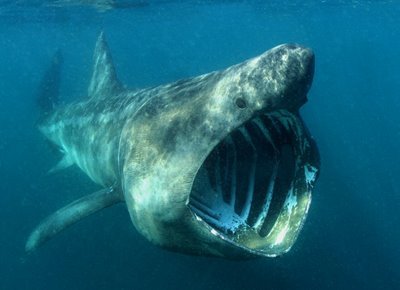|
- Getting Started
- Help
- Master Lists
- Useful Links
- Features
Final Creature Projects
Submit final creatures here to be added to the lore!
(This is a thread from Mizahar's fantasy role playing forums. Why don't you register today? This message is not shown when you are logged in. Come roleplay with us, it's fun!)This is the development forum for the Suvan Sea. The Suvan is a place of great adventure and undiscovered wonders, and far below where the air touches is a place where those things are being defined. Everything is worked on down in the deep, and anyone is welcome to join. Join us as we collaborate!
Final Creature Projects
![]() by Anchor on February 1st, 2013, 4:57 am
by Anchor on February 1st, 2013, 4:57 am
Will be gone for a couple days, grades need lifting
|
Final Creature Projects
![]() by Edreina on March 20th, 2013, 1:00 am
by Edreina on March 20th, 2013, 1:00 am
Creatures
Strykers :

Name: Strykers (also called Jumpers)
Classification: Fauna
Frequency: Common
Major Features: Silvery Blue scales and large pectoral fins
Most Commonly Found: In the deeper water near rivers
Appearance: Females tend to be larger, being 1 foot long at maturity and near 2 feet near the end of their lifecycle. Both sexes exhibit pale white underbellies and bodily scales that tend to be silver with a bluish hue. White and brown variances do occur but tend to die off young. Strykers are most known for their massive, fanlike pectoral fins which can each be as long as their bodies and half as wide. These fins are nearly transparent which gives the fish a ghostly appearance when viewed from afar in great schools. They feed primarily on schools of tiny Krill, meaning that they have no teeth. The young are less than an inch long, and appear to be glasslike. Some river-side children will capture young Strykers and keep them as brief pets.
Uses: These fish have very little meat on their bodies, meaning that they are not often eaten. Their fins, however, are often painted and sold to higher class women as fans.
Nature and Habits: Strykers travel in large schools, numbering between 50 and 200 with the larger females traveling on the outside, sheltering the smaller males. They are usually deep water fish but breed in the shallow river mouths or even a bit upstream. The females can live to be up to five years old but the males die shortly after fertilizing up to 10 batches of eggs. Their long fins help them leap over areas of turbulent water or waterfalls. They can also be seen leaping out of open water on warmer days in persuit of small insects and smaller fish.
Drum-Throats :

Name: Drum-throats
Classification: Fauna
Frequency: Uncommon
Threat Level: Low
Abilities: Creation of a crippling, subsonic pulse that can briefly paralyze even small humans at close range
Most Common In: Central Suvan Sea
Appearance: Drum-throats have dark, dappled gray skin with the texture of sandpaper. Their bodies are tapered, being much larger around the mouth and very small near the tail forked tail; they tend to max out in size around 8 feet for both sexes. They have blunt heads and a wide, frowning mouth that can expand large enough to swallow a child. They are slow, gentle swimmers except when in pursuit of prey.
Nature and Habits: Drum-throats travel in small pods of 2-3 and will circle schools of fish before releasing a subsonic whump that stuns fish, leaving them as easy pickings for the cavernous mouths of the Drum-throats. Males and females will travel together freely, mating whenever a female comes into heat, often with multiple partners. Females will then leave briefly to give birth to three pups (twins and quadruplets are rare occurrences because she will often begin with almost 20 pups but they will consume one another in the womb until they max out the size, forcing their mother to birth them) before returning to that pod or joining a new one. The pups will hunt small fish and crustaceans together for the first year before leaving their kelpy-safe-haven for more plentiful waters.
Spearheads :

Name: Spearhead
Classification: Fauna
Frequency: Rare
Abilities: Sonar sense and the ability to perform a complete 180 degree turn an instant if it senses something behind it
Most Common: Near coral reefs or stony shoals
Appearance: Both male and female Spearheads can average up to 12 feet with the oldest being recorded and sighted at 15 feet. Their torpedo bodies are covered with matte gray flesh with typical darker splotches on top and lighter below to break up their outline. They have a large, globular protrusion at the front of their skull that is home to millions of sonar receptors, which makes up for their very poor eyesight. Their sense of smell is also very keen, and they have the ability to to smell one part per million of blood in water as far away as two miles. Their teeth are quite jagged and point inward, a sign that they are more likely to swallow prey whole than tear off chunks of flesh.
Nature and Habits: Spearheads are highly territorial, solitary hunters that inhabit the coastal shallows. Because they are so territorial, their numbers are quite low and they tend to kill any other Spearhead that enters their territory, even potential mating partners. Despite this, mature Spearheads have been known to inhabit a single shoal for as many as 40 years. They will not go out of their way to attack anything larger than themselves, and tend to avoid boats because of their size and the fact that they have no heartbeat. They have been known, however, to steal from fishermen's nets, tearing them or becoming entangled in the process. Spearheads are rather slow swimmers, but incredibly stealthy.
Nikayo :
Name:Nikayo
Classification: Fauna
Frequency: Uncommon
Abilities: Poisonous, feathery stingers that deliver a neurotoxin which instantly kills small fish and can seriously injur children.
Most Common: Open water
Appearance: Nikayo are jellyfish-like creatures that float atop the water through the use of large, blue gas bladders, letting their poisonous nets (sometimes reaching a surplus of 40 feet in length) flow down beneath them.
Behavior and Interactions: Nikayo are utterly mindless, drifting wherever the current takes them and attacking without prejudice. Svefra are known to pop their gas bubbles with spears anytime they notice a Nikayo, causing the creature to sink and die.
Herders :

Name: Keai (or Herders)
Classification: Fauna
Frequency: Common
Most Common: Rocky shallows and kelp forests
Appearance: These large, blubbery creatures have thick, gray hides that have sparse, wiry hair covering their bodies that keep them aware of their surroundings and herd-mates. Females tend to average around 8 feet long and 600 pounds at their thinnest before mating, but can weigh up to 1000 pounds right before they give birth. Males are much larger, being up to 15 feet long and weighing well over 1200 pounds of pure blubber and muscle. Their faces are nearly flat with obtuse muzzles covered in light colored whiskers, petite ear flaps, and small, beady eyes. They are slow moving as they graze in in the shallows, but can be incredibly quick and agile when spooked or provoked.
Behavior and History:
Herders were aptly named when one Tallye Highshoal discovered that these peaceful herbivores could be herded along beds of algae and sea grass using a simple rowboat. Pods tend to number about 15 and be all female, led by the eldest female, with males forming groups numbering 3-5 during the non mating season. Female gestation is slow and the growth of calves is also quite slow (reaching full maturity after 16 months). This, combined with their overwhelmingly docile nature, means that if a pod is in contact with humans long enough, they can be milked. If threatened, females will create a circle around calves, facing outwards to ram any enemy that presents itself. Females save up huge stores of fat to create very potent milk that should usually be watered down, less it make the human consuming it quite ill. Males are often hunted for their thick hide and flavorful meat, as well as the short white tusks that appear after they reach 6 years of age. These tusks are quite colorful when cut and make expensive jewelry.
Whitewave Dolphins :

Name:Whitewave Dolphins
Classification: Fauna
Frequency: Common
Abilities: Extreme acrobatics
Most Common: Surrounding pods of ships
Appearance: Whitewave Dolphins tend to be less than 4 feet long and under 200 pounds, but make up for their size in sheer numbers. Whitewave Dolphin pods have been counted numbering an astounding 50 individuals. These dolphins are an inky black with bright white "waves" on their sides, running from their eye to about a a foot from the end of their tails. Their beaks are slightly shorter and used to capture fish as the pods will chase down entire schools of fish. Calves are born a stony gray and will follow their mothers devoutly for the first 6 months of their lives.
Behavior and Interactions: Whitewave Dolphins are hugely social both with others of their species and boats. Humanized Whitewave Dolphins have been known to play with humans for hours and then follow their boat in hopes of playing again. This species of dolphin was found and named by the Whitewave Pod after a storm when these dolphins emerged from beneath the ships, likely taking cover. The Lia at that time saw their appearance as a sign of favor from Laviku.
-

Edreina - Unbound
- Posts: 1258
- Words: 1079180
- Joined roleplay: March 18th, 2013, 1:40 am
- Location: Sahova
- Race: Human, Svefra
- Character sheet
- Storyteller secrets
- Scrapbook
- Medals: 8
-


-


-


-


2 posts • Page 1 of 1
Who is online
Users browsing this forum: No registered users and 0 guests
